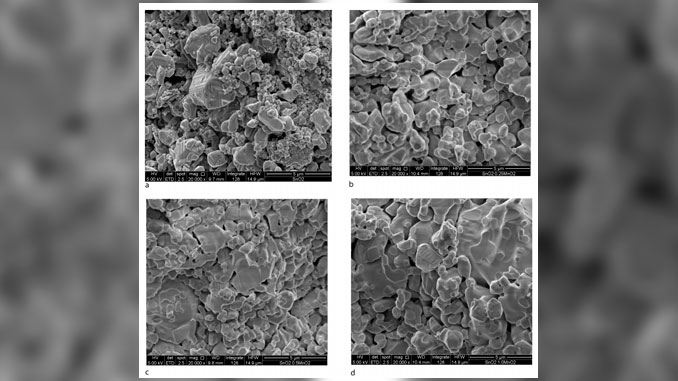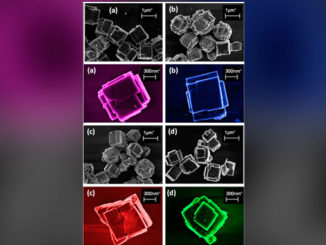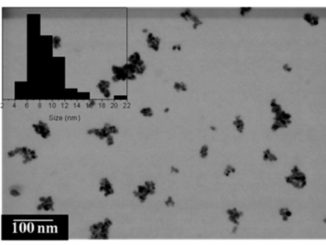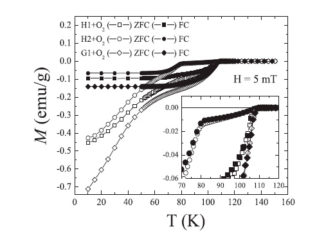
Writers: Eliana N.S. Muccillo, Reginaldo Muccillo
Keywords: Electric field-assisted sintering; Tin dioxide; Impedance spectroscopy
Abstract: Green compacts of pure SnO2 and with addition of 0.25, 0.5 and 1.0 wt.% MnO2 were sintered by applying 100 V cm−1 at 1 kHz and limiting the current to 5 A during 5 min at 1100 and 1200 ◦C. The shrinkage was monitored precisely during the electric current pulses. The role played by the additive was clearly seen in the shrinkage data: the higher is the additive content the lower is the onset of the shrinkage and the higher is the attained final shrinkage level. Sintering experiments on cylindrical samples with 0.5 wt.% MnO2 with different thickness-to-diameter ratio show that the lower is that ratio, the higher is the shrinkage level, showing that the imparted Joule heating play a key role in the mechanisms responsible for sintering. The total electrical resistivity, evaluated by impedance spectroscopy, depends on the maximum attained shrinkage level, due to pore elimination upon sintering.




